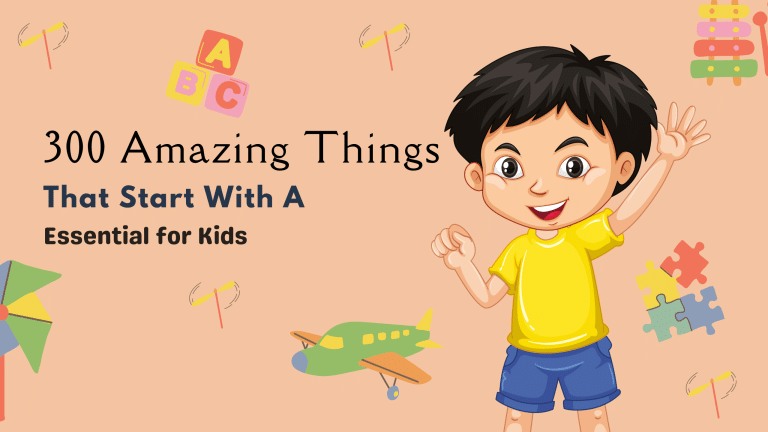Decoding CVC Sentences: A Comprehensive Approach
As a teacher or parent, you know that learning to read CVC (consonant-vowel-consonant) words and sentences is a crucial milestone in a child’s literacy journey.
However, guiding children through this process can be challenging, and you may find yourself seeking effective strategies to support their learning.
In this blog post, we’ll explore a comprehensive approach to decoding CVC sentences that will empower your young learners.
You’ll find practical tips and engaging activities that make learning to read CVC words and sentences enjoyable and rewarding for you and your child.
By the end, you’ll have a toolkit of strategies to help your child become a confident reader.
Understanding CVC Words

CVC words are simple three-letter words that follow a consonant-vowel-consonant pattern.
These words are the foundation of early reading instruction because of their predictable phonetic structure.
Common examples include:
- Cat (c-a-t)
- Dog (d-o-g)
- Bed (b-e-d)
These examples show how straightforward and consistent CVC words are, making them perfect for young readers to practice their decoding skills.
Benefits of Decodable Sentences with CVC Words
1. Enhancing Phonics Development
- Application of Phonics Knowledge: CVC sentences allow children to use their phonics knowledge in real life. By reading these sentences, kids practice sounding out individual letters and putting them together to form words within sentences. This hands-on practice strengthens their phonics skills and helps them see how sounds create words and how words build sentences.
- Strengthening Phonemic Awareness: CVC sentences also help boost children’s phonemic awareness. As they read, they practice identifying and working with individual sounds within words. Activities like breaking down sounds in sentences and blending them back together improve their phonemic skills, making them better readers.
2. Building Reading Confidence
- Sense of Achievement: Successfully reading CVC sentences gives children a sense of accomplishment. Finishing sentences increases their confidence and self-esteem. This feeling of success encourages them to try harder texts, creating a positive view of reading.
- Motivation for Further Reading: The confidence kids gain from reading CVC sentences motivates them to keep reading. Positive reinforcement inspires them to practice more. This ongoing motivation helps develop a lifelong enjoyment of reading and learning.
3. Monitoring Progress
- Assessing Decoding and Comprehension: Decodable sentences provide a way to assess children’s decoding and comprehension abilities. Teachers can watch how well children sound out words and understand sentences. Regular assessment shows which children are improving and who may need extra help.
- Identifying Areas for Improvement: CVC sentences help find areas where children need more support. Teachers can work on specific sounds or decoding strategies children struggle with. This focused approach allows for personalized instruction, ensuring each child gets the help they need to boost their reading skills.
4. Promoting Fluency and Comprehension
- Contextual Understanding Reading: CVC sentences help children understand words in context. Sentences give a meaningful structure for practicing reading skills. This contextual practice improves their comprehension abilities, allowing them to link words to their meanings within sentences.
- Automaticity in Word Recognition: Repeated exposure to CVC sentences promotes automaticity in word recognition. Children start to recognize words quickly and easily. This automaticity is key for reading fluency, allowing children to focus on understanding the text rather than sounding out each word.
Practical Strategies for Teaching CVC Sentences

1. Explicit Instruction
- Teaching Phonological and Phonemic Awareness: Phonological and phonemic awareness are the building blocks of reading. Phonological awareness involves recognizing and working with sounds in spoken language, while phonemic awareness is hearing, identifying, and manipulating individual sounds (phonemes) in spoken words.
Activities like rhyming, segmenting, and blending sounds can help develop these skills. For example, break down the word “cat” into separate sounds: /k/ /æ/ /t/, then blend them back together.
- Phonics Instruction and Letter-Sound Relationships: Phonics instruction teaches the connection between letters and sounds. This includes teaching children how to decode words by sounding out letters and putting sounds together. Focus on CVC words because they have a predictable pattern.
Use activities like letter-sound matching games and practicing with word lists. For instance, show the word “dog” and have children sound out each letter before blending them.
2. Interactive Activities
- Flip Sentences: Flip sentences help children practice reading CVC words within sentences. Use cards with simple CVC sentences on one side and a matching picture on the other. Children read the sentence, then flip the card to see the picture, reinforcing comprehension and decoding skills. Example: “The cat sat” with a picture of a sitting cat on the back.
- Word Hunts: Word hunts make reading practice fun and interactive. Provide sentences with CVC words and have children find, highlight, or circle the CVC words. This activity strengthens word recognition and decoding within a sentence context. For example, “The dog ran fast,” and children find and circle “dog” and “ran.”
- Jumbled Sentences: Jumbled sentences help children understand sentence structure and practice decoding. Give sentences cut into individual words and have children rearrange them to form correct sentences. This activity improves reading comprehension and logical thinking. Example: Providing “ran cat the” for children to rearrange into “The cat ran.”
- Picture-Word Match: Picture-word matches help children connect words with their meanings. Provide picture cards and corresponding CVC word cards for children to match. This activity reinforces word recognition and comprehension. For example, match a picture of a bed with the word “bed.”
- Fill in the Blank: Fill-in-the-blank activities enhance understanding of context and word usage. Provide sentences with missing CVC words for children to fill in. This activity supports vocabulary development and sentence comprehension. For example, “The ___ is red,” and children fill in “cat.”
- Roll and Read: Roll and read makes reading practice enjoyable and engaging. Create a dice or spinner with CVC word options and sentences containing those words. Children roll the dice, spin the spinner, and then read the corresponding sentence. Example: Rolling a dice showing “bat” and reading “The bat can fly”.
- Sentence Building: Sentence building enhances creativity and understanding of sentence structure. Provide word cards and encourage children to construct their sentences. This activity reinforces vocabulary and comprehension. Example: Use cards like “cat,” “sat,” and “mat” to build “The cat sat on the mat.”
- Storytime Fun: Storytime fun promotes listening and comprehension skills. Read simple stories with CVC words and ask children to identify them. This activity enhances word recognition and understanding of story structure. For example, Read “Pat the Cat,” and children identify “Pat” and “cat.”
- Digital Resources: Digital resources offer interactive and engaging learning experiences. Use educational apps and online platforms focused on CVC words and sentences. These tools provide games, exercises, and activities reinforcing decoding and reading skills. Example: Using apps like “ABCmouse” for interactive CVC word practice.
Encouraging Independent Reading
1. Fostering a Love for Reading
- Empowering Students to Read Independently: Empowering students to read independently is essential for fostering a lifelong love of reading. Encourage self-selection of books to promote autonomy and interest. Provide access to various reading materials that cater to different interests and reading levels.
- Create a classroom library with diverse genres and topics. Implement “independent reading time” where students can choose and read books they enjoy. For example, students can be allowed to share their favorite books with classmates, creating a community of readers.
- Creating a Supportive Reading Environment: A supportive reading environment enhances students’ willingness to read independently. Ensure a comfortable, quiet, and inviting space for reading. Display books attractively and make them easily accessible.
- Set up cozy reading corners with pillows, bean bags, and good lighting. Use bulletin boards to highlight student book reviews and recommendations. For instance, organize reading challenges and reward systems to motivate students to read more.
2. Transition to More Complex Texts
- Gradual Progression from Simple to Complex: Gradually progressing from simple to complex texts helps build confidence and reading skills. Start with decodable books and gradually introduce more advanced literature—scaffold reading experiences by providing support as needed.
Use guided reading sessions to help students tackle more challenging texts. Provide books that incrementally increase in difficulty to match students’ growing skills—for example, the transition from CVC word books to simple chapter books with supportive illustrations.
- Ensuring Continuous Reading Success: Ensuring continuous reading success involves consistent monitoring and support. Regularly assess reading levels and provide appropriate materials. Offer feedback and celebrate progress to keep students motivated.
Use reading logs and journals to track students’ reading habits and preferences. Conduct regular one-on-one reading conferences to discuss progress and set goals. For example, implement a “book buddy” system where older students mentor younger readers, promoting a culture of reading.
Conclusion
Decoding CVC sentences is a vital step in every child’s reading journey.
By understanding the importance of CVC words and implementing practical strategies, teachers and parents can effectively support young learners in developing their decoding skills.
However, creating a nurturing environment that encourages independent reading will foster a lifelong love for books and learning.
As children progress from simple CVC words to more complex texts, they gain confidence and fluency, setting the stage for future reading success.
By working together and using research-based strategies, we can help every child unlock the magic of reading and open doors to a world of endless possibilities.







